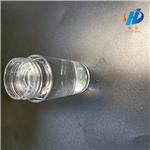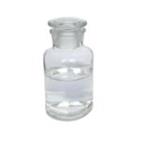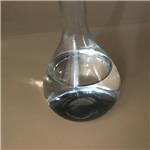- (S)-(-)-LIMONENE
-

- $50.00 / 1kg
-
2024-04-27
- CAS:5989-54-8
- Min. Order: 1kg
- Purity: 99.10%
- Supply Ability: 50000kg
- (S)-(-)-LIMONENE
-

- $50.00 / 1kg
-
2023-09-15
- CAS:5989-54-8
- Min. Order: 1kg
- Purity: 0.99
- Supply Ability: 10 tons
- (S)-(-)-LIMONENE
-

- $0.00 / 200KG
-
2023-09-06
- CAS:5989-54-8
- Min. Order: 1KG
- Purity: 99%
- Supply Ability: 500000kg
|
| | (S)-(-)-LIMONENE Chemical Properties |
| Melting point | -74°C | | Boiling point | 175-177 °C(lit.) | | alpha | -99.5 º (C=NEAT) | | density | 0.844 g/mL at 25 °C(lit.) | | vapor density | 4.7 (vs air) | | vapor pressure | <3 mm Hg ( 14.4 °C) | | refractive index | n20/D 1.471(lit.) | | Fp | 119 °F | | storage temp. | Sealed in dry,Store in freezer, under -20°C | | solubility | Chloroform (Sparingly), Ethanol (Slightly), Methanol (Slightly) | | form | Liquid | | color | Clear colorless to pale yellow | | Odor | at 100.00 %. terpene pine herbal peppery | | Odor Type | terpenic | | explosive limit | 0.7-6.1%(V) | | optical activity | [α]20/D 94±4°, c = 10% in ethanol | | Water Solubility | Insoluble | | Merck | 14,5493 | | BRN | 2323991 | | Stability: | Stable. Incompatible with strong oxidizing agents. Flammable. | | LogP | 4.38 at 37℃ | | CAS DataBase Reference | 5989-54-8(CAS DataBase Reference) | | NIST Chemistry Reference | Cyclohexene, 1-methyl-4-(1-methylethenyl)-, (S)-(5989-54-8) | | EPA Substance Registry System | Cyclohexene, 1-methyl-4-(1-methylethenyl)-, (4S)- (5989-54-8) |
| Hazard Codes | Xi,N | | Risk Statements | 10-38-43-50/53 | | Safety Statements | 24-37-60-61 | | RIDADR | UN 2052 3/PG 3 | | WGK Germany | 2 | | RTECS | OS8350000 | | F | 8-10-23 | | TSCA | Yes | | HazardClass | 3 | | PackingGroup | III | | HS Code | 29029090 |
| | (S)-(-)-LIMONENE Usage And Synthesis |
| Description | (S)-(-)-Limonene is one of the most popular natural occurring cyclic terpenes and its chemical name is D-Limonene. It is a colorless liquid at room temperature with a characteristic lemon-like odor. Although it is insoluble in ether and alcohol, (S)-(-)-Limonene is soluble in water and has a boiling point of 74oC. (S)-(-)-Limonene can be recovered from orange peel from the conversion of press liquor to molasses. It is a major constituent of numerous citrus oils such as lemon, orange, lime, mandarin, and grapefruit, which are fruits from the Rutaceae family.
(S)-(-)-Limonene can be obtained by stream distillation of pulp and citrus peels resulting from production of cold-pressed oils and juice or from deterpenation of citrus oils. The compound also occurs in other essences and oils obtained during the processing of citrus juice, including deoiler, essence oil, aroma, and juice oil.
| | Chemical Composition and Reactions | The main D-Limonene’s compositions include camphene, a-pinene, a-terpene, b-pinene, b-bisabolene, trans-a-bergamotene, limonene, neral, and nerol. It chemically belongs to the family of cycloalkane known as terpenes. Notably, its IUPAC name is 4-isopropeny–1–methylcyclohexane.
D-limonene can be distilled without decomposing and is a typically stable monoterpene, but can crack in high temperatures to form isoprene. D-limonene oxidizes easily in moist air to generate limonene oxide, carvone, and carveol. It dehydrates when reacted with Sulphur to form p-cymene. D-limonene isomerizes to conjugated diene α-terpinene when heated with mineral acid.
| | Application | Clinical Applications
As an excellent cholesterol solvent, (S)-(-)-Limonene is normally used clinically to dissolve cholesterol containing gallstones.
It has also been used for relieving of heartburn and gastroesophageal reflux disorder (GERD) due to its gastric acid neutralizing characteristic and its support for normal peristalsis.
Studies have established (S)-(-)-Limonene’s chemo-preventive activity against many types of cancers. Patients with breast cancer showed partial response while patients with colorectal cancer were stable for more than six months from phase 1 clinical trials.
D-limonene is also used in maintaining regular bowel movements, particularly when slow movements are caused by a fungus known as Candida albicans that normally lead cause intestinal infection.
D-limonene is used as a mild suppressor of appetite, thus it can be employed to help in managing weight. Notably, it is useful when an individual has unhealthy blood sugar levels.
Personal Use
D-limonene is used as flavoring agent to mask the bitter taste of alkaloids as well as a fragrance in perfumery. The compound is also used in bath products, aftershave lotions as well as other personal products. It is normally added to cleaning products, for instance, hand wash solutions to give an orange or lemon fragrance.
Food Industry
D-limonene is used as a fragrance and flavoring in the manufacture of foods, chewing gums, and beverages.
Agricultural Use
D-limonene is utilized as botanical insecticide as well as in the organic herbicide “Aenger.”
Industrial Purposes
Since it is produced from naturally from citrus oil and byproducts during manufacturing of orange juice, d-Limonene is used as solvent for cleaning purposes, for example, the removal of oil from parts of machines.
It is also used as a paint stripper as well as an alternative fragrance to turpentine. In some airplane models, d-Limonene is used as a solvent in glues and as a constituent in some paints. The compound is also used in commercial air fresheners. It is also used to remove self-adhesive postage stamps from envelopes by philatelists.
d-Limonene has been considered as a biofuel due to its combustibility.
Printing
D-Limonene is used as a solvent for filament that is used in 3D printing. Printers are able to erect binders and supports from HIPS, which is a polystyrene plastic that can easily dissolve in d-Limonene.
Therapeutic
The therapeutic properties of d-limonene include antimicrobial, antianaemic, antiseptic, and anti-sclerotic. The compound also has carminative, bactericidal, depurative, cicatrizant, diuretic, rubefacient, hyposensitive, vermifuge, and tonic characteristics.
Histology
D-Limonene is often used in preparing tissues (especially when cleaning dehydrated specimen) for histology due to its less toxic characteristic as compared to xylene.
Others
D-limonene is used on wounds and sores, aromatherapy, douching, cataract, foots, mouth ulcers, varicose, and spots.
| | Safety and Side Effects | D-limonene is considered to have low toxicity; therefore, does not pose a carcinogenic, mutagenic, or nephrotoxic risk to humans. In proportional food amounts, d-limonene is safe. When taken orally for up to one year in correct medical amounts, d-limonene appears safe for most people.
However, there is no enough information or research regarding the effect of d-limonene on pregnant and breast feeding women when taken in larger medical amounts. As such, it is vital to stay on the safer side until more research is done.
| | Dosing | The correct dosage for d-limonene is dependent on numerous factors, such as user’s health, age, as well as other conditions. It is important to note that natural products are not necessarily safe, thus dosage can be important.
| | Description | ι-Limonene has a pleasant, lemon-like odor free from camphora ceous and turpentine-like notes. The most important and wide spread terpene; it is known in the d- and ι- optically active forms
and in the optically inactive dl-form (known as dipentene); it has
been reported found in more than 300 essential oils in amounts
ranging from 90 - 95% (lemon, orange, mandarin) to as low as 1% (palmarosa);1 the most widespread form is the d-limonene,
followed by the racemic form, and then ι-limonene. | | Chemical Properties | d-, l- or dl-Limonene has a pleasant, lemon-like odor free from camphoraceous and turpentine-like notes. Limonene
is the most important and widespread terpene; it is known in the d- and l- optically active forms and in the optically inactive dl-form
(known as dipentene). | | Chemical Properties | colourless liquid with lemon odour | | Occurrence | It has been reported found in more than 300 essential oils in amounts ranging from 90 to 95% (lemon, orange,
mandarin) to as low as 1% (palmarosa); the most widespread form is the d-limonene, followed by the racemic form and then l-limo nene. Also reported found in ginger, nutmeg, pepper, mace, hop oil, coriander seed, calamus, dill herb, caraway seed and rosemary. | | Uses | (S)-(-)-Limonene is used to inhibit the proliferation of colon cancer cells. It is also used in artificial essential oils in order to produce (+)-carvone. It is an active component of turpentine. Further, it is used in flavorings, fragrances, and cosmetics. It finds application as a solvent and wetting agent. In addition to this it is used to produce resins. | | Preparation | d-Limonene may be obtained by steam distillation of citrus peels and pulp resulting from the production of juice and cold pressed oils, or from deterpenation of citrus oils; it is sometimes redistilled. | | Definition | ChEBI: An optically active form of limonene having (4S)-configuration. | | Aroma threshold values | Detection: 4 to 229 ppb | | Taste threshold values | Taste characteristics at 30 ppm: sweet, orange, citrus and terpy. | | General Description | (S)-(-)-Limonene, a monoterpenoid compound, is mostly used in perfumery and in flavoring. On irradiation, it undergoes radiolysis, which leads to a reduction in the optical purity. (S)-(-)-Limonene also shows potent antimicrobial activity. | | Flammability and Explosibility | Flammable | | Contact allergens | Limonene is a racemic form of dand l-limonene.
d-Limonene is contained in Citrus species such as citrus,
orange, mandarin, and bergamot. l-Limonene is
contained in Pinus pinea. | | Safety Profile | A skin irritant. When
heated to decomposition it emits acrid
smoke and irritating fumes. |
| | (S)-(-)-LIMONENE Preparation Products And Raw materials |
|